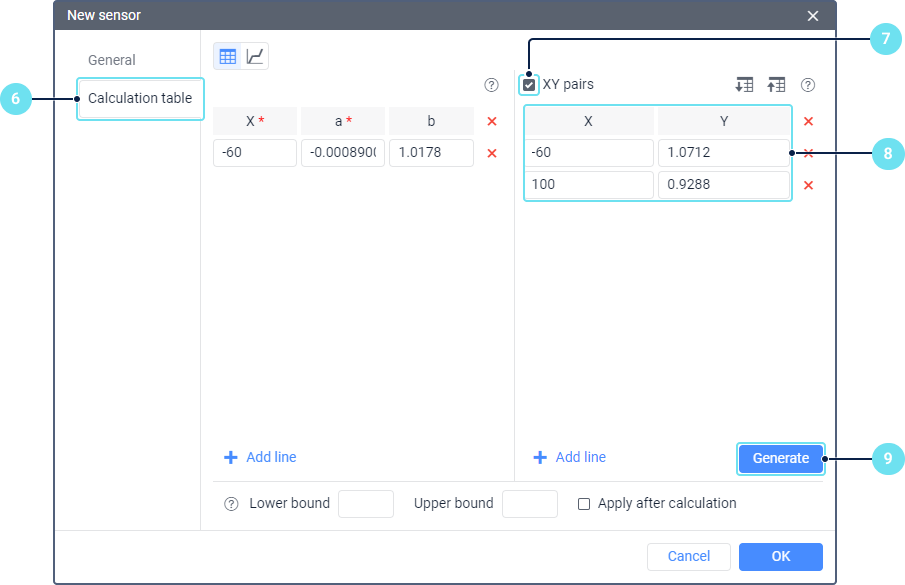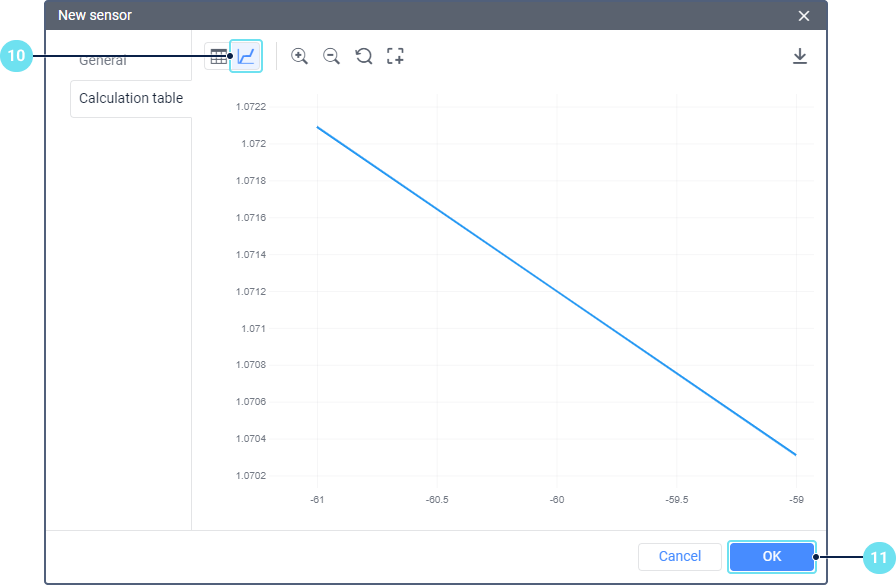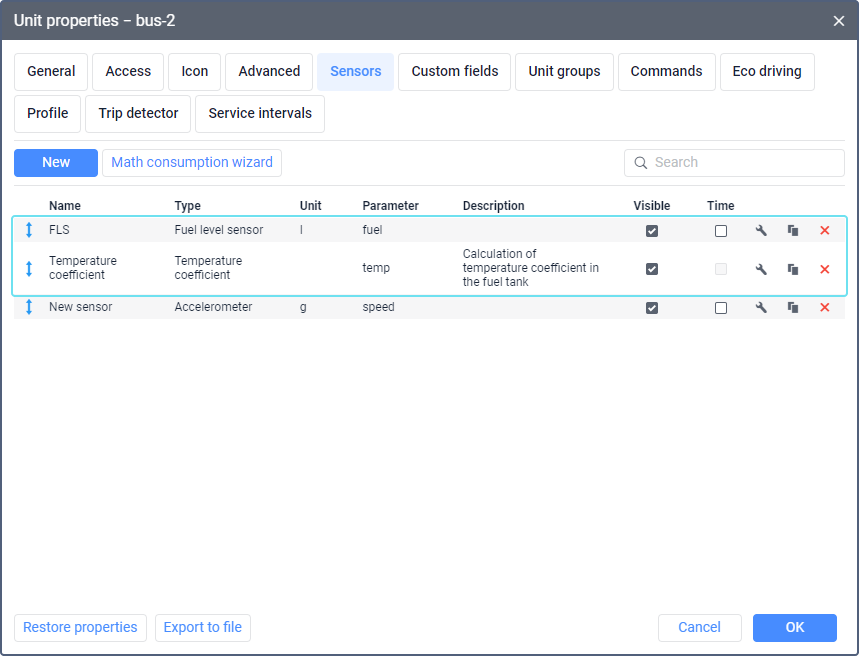Configuring Temperature Coefficient
Any liquid can be compressed or expanded at different temperatures, so the readings of the fuel level sensor may not be accurate enough without taking into account the temperature in the fuel tank or, for example, in the fuel tanker. In this case, to get more accurate calculations of the fuel level, you should also create a sensor of the Temperature coefficient type. It allows calculating the temperature coefficient based on the parameter in which temperature or voltage data is received.
Before creating the temperature coefficient sensor, you should find out the coefficients for the maximum and minimum temperature. To do this, you should:
- In the specification of the fuel level sensor used, find out the maximum and minimum temperature at which it can work properly.
- Find out the rated temperature of the reference volume, that is, the temperature at which the fuel volume is considered correct, and the temperature coefficient is not required to calculate it.
- Find out the density of the fuel used (ρ).
Consider an example with the following data:
- tmax = +100 and tmin = -60°С (maximum and minimum temperature);
- trated = +20°С (rated temperature of the reference volume);
- 0.89 t/m3 (diesel fuel density).
Using the data listed above, calculate the coefficient values by the formulas:

Thus, you should get the following values:

After calculating the values, you should create the temperature coefficient sensor. To do this, follow the steps below.
-
Click New (
 ) on the Sensors tab of the unit properties.
) on the Sensors tab of the unit properties.

-
Enter the name of the sensor.
-
Select the Temperature coefficient sensor type.
-
If necessary, add a description.
-
Specify the parameter in which temperature data is received.
-
Go to the Calculation table tab.

-
Activate the XY pairs tool.
-
Add pairs with the coefficients for the minimum and maximum temperature using the calculated values.
-
Click Generate.
-
If you want to see the calculation result in the chart, click on the icon
 above the table.
above the table.

-
Click OK.
If the parameter sends not temperature but voltage data, then instead of the minimum, maximum, and rated temperature, you should find out the minimum and maximum voltage as well as the rated voltage of the reference volume and calculate the coefficients using this data.
The temperature coefficient influences only the calculations carried out according to the fuel level sensor.
